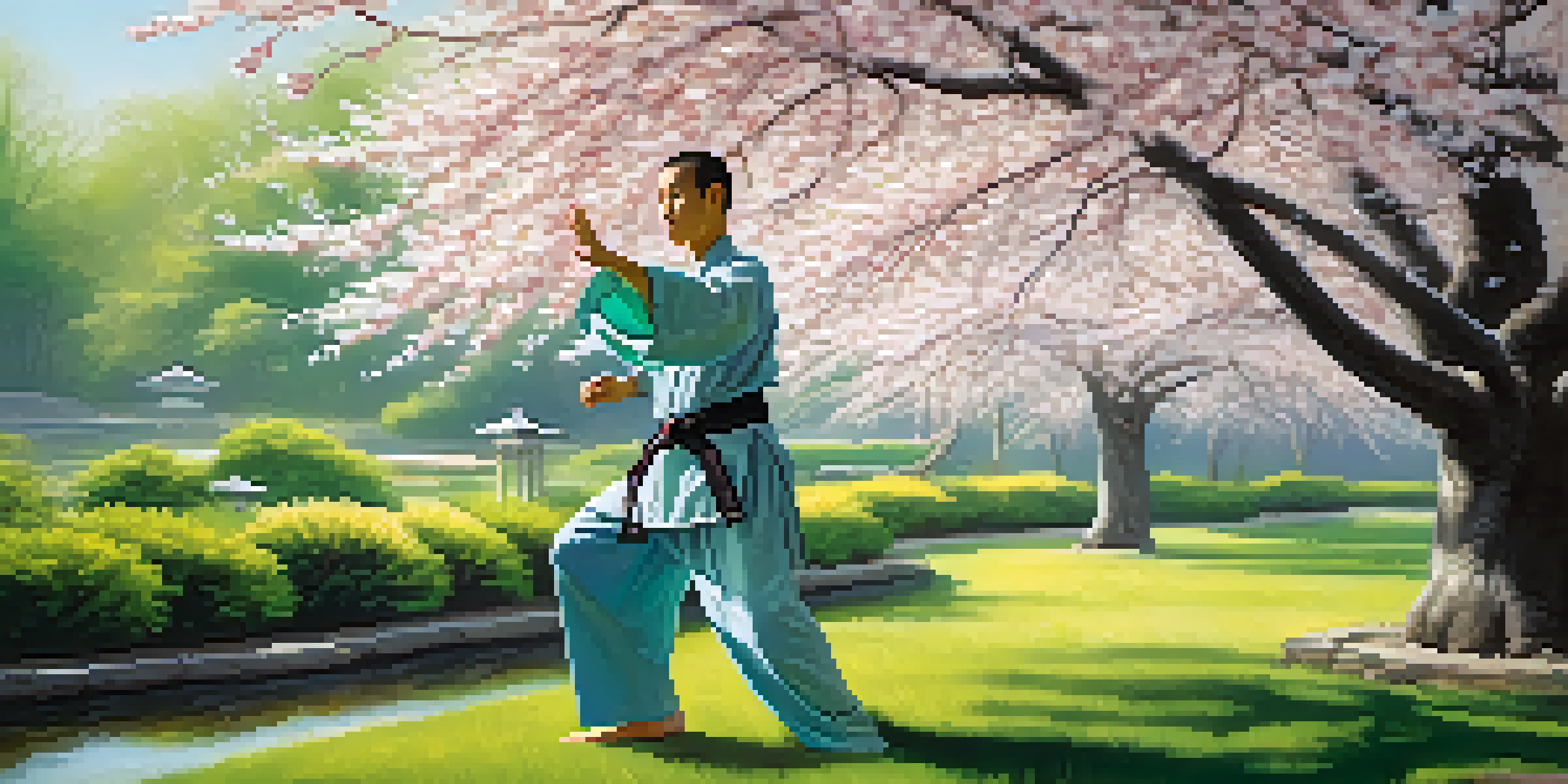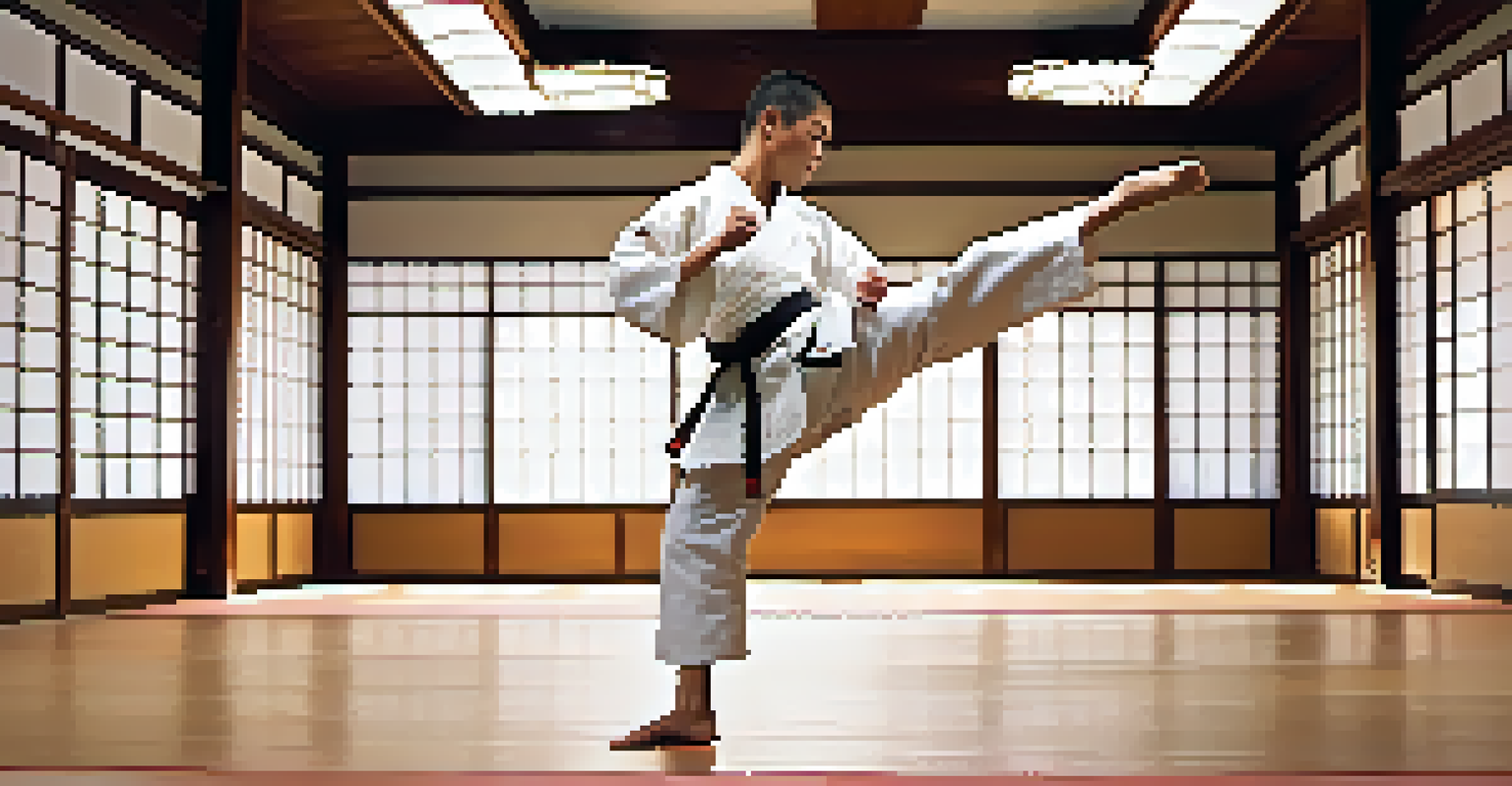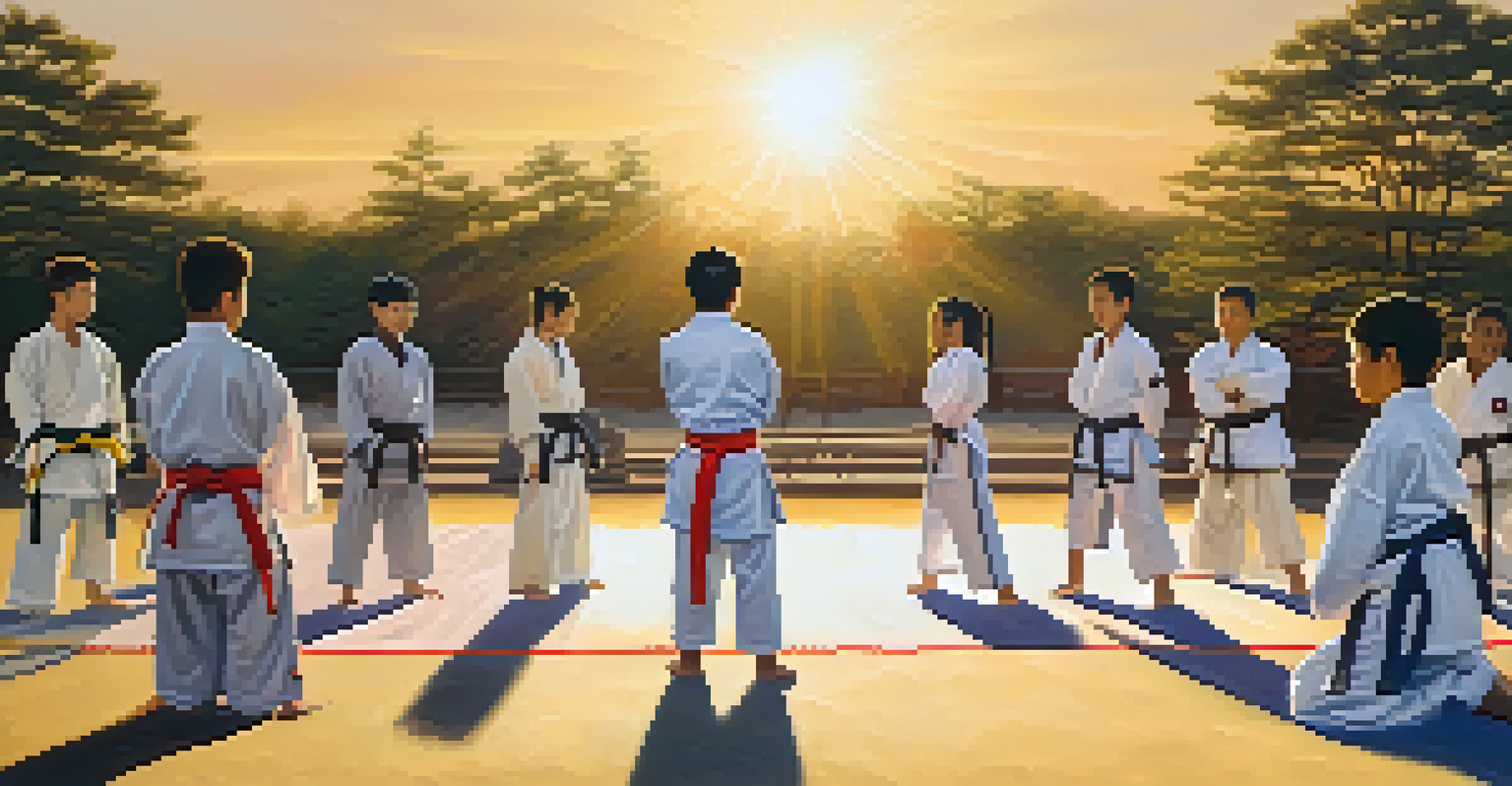The Evolution of Eastern Martial Arts Through the Ages

Roots of Eastern Martial Arts: Ancient Beginnings
Eastern martial arts trace their origins back thousands of years, often intertwined with spiritual practices. Early forms of combat were not just about fighting; they were a way to cultivate discipline, health, and inner peace. For instance, ancient Chinese texts mention martial arts as a means to train both the body and mind, reflecting the holistic approach that characterizes these disciplines.
Martial arts is not about fighting; it is about building character.
As these practices evolved, they became more structured, with specific techniques and philosophies emerging. Various regions developed their own unique styles, influenced by cultural and environmental factors. This diversity laid the groundwork for the rich tapestry of martial arts we see today, from the flowing movements of Tai Chi to the dynamic strikes of Karate.
Additionally, the early martial arts often involved elements of self-defense, military training, and even dance, showcasing the multifaceted nature of these practices. They were not only designed for combat but also for personal development and community bonding, setting the stage for their evolution through the ages.
The Influence of Philosophy and Religion on Martial Arts
Philosophy and religion have played crucial roles in shaping Eastern martial arts. For instance, Buddhism and Taoism introduced concepts of balance, harmony, and mindfulness that are integral to many martial arts today. These philosophies encouraged practitioners to seek not just physical strength but also mental clarity and spiritual enlightenment.

Martial arts like Aikido and Kung Fu embody these philosophical teachings, emphasizing harmony with oneself and others. Practitioners learn to move fluidly, redirecting energy rather than resisting it, which mirrors the principles of yin and yang. This philosophical approach contributes to the martial arts being viewed as a way of life rather than merely a sport.
Martial Arts' Holistic Origins
Eastern martial arts began as practices for cultivating both physical and mental discipline, emphasizing health and inner peace.
Furthermore, rituals and meditative practices became common in training, reinforcing the connection between martial arts and personal growth. As students engage in these practices, they develop a deeper understanding of themselves and their environment, demonstrating that martial arts is as much about internal transformation as it is about external skill.
Martial Arts in Ancient China: A Cultural Milestone
Ancient China is often considered the cradle of martial arts, where numerous styles and systems flourished. The legendary Shaolin Temple, for example, became synonymous with Kung Fu, combining martial training with Buddhist teachings. Monks not only practiced self-defense but also sought enlightenment through their physical discipline.
The ultimate aim of martial arts is not having to use them.
During the dynastic periods, martial arts became a significant aspect of military training and national pride. Techniques were documented in texts like the 'Wujing Zongyao,' which provided systematic approaches to combat. This intertwining of martial arts with cultural identity helped preserve these practices through centuries of change.
As Chinese martial arts spread across Asia, they influenced neighboring countries, leading to the development of unique styles. This cultural exchange enriched the martial arts landscape, creating a diverse array of practices that continue to thrive and evolve today.
The Role of Samurai in Japanese Martial Arts Development
The samurai played a pivotal role in the evolution of Japanese martial arts, emphasizing honor, discipline, and mastery of weaponry. Bushido, the way of the warrior, became a guiding philosophy, shaping not only combat techniques but also the character of the martial artist. This code emphasized loyalty, courage, and respect, which are still valued in martial arts today.
Kendo, Iaido, and Jiu-Jitsu are just a few of the martial arts that emerged from this samurai tradition. Each style reflects a unique aspect of the samurai's approach to combat, whether it be the swift strikes of Kendo or the grappling techniques of Jiu-Jitsu. The focus on technique and mental fortitude in these arts highlights the samurai's influence on martial training.
Philosophy Shapes Martial Practices
Philosophical and spiritual influences, particularly from Buddhism and Taoism, have profoundly shaped the principles and practices of martial arts.
Moreover, the samurai's dedication to discipline and continuous improvement laid the groundwork for the modern dojo culture. Today, practitioners are encouraged to embody the same values of respect and perseverance that defined the samurai, ensuring that their legacy lives on in martial arts training.
Martial Arts and Modernization: Changes in the 20th Century
The 20th century marked a significant turning point for Eastern martial arts, as they began to gain international recognition and popularity. With the rise of cinema and influential figures like Bruce Lee, martial arts transcended their cultural origins to become a global phenomenon. Films showcased the artistry and effectiveness of these practices, sparking interest across continents.
As martial arts spread worldwide, they adapted to fit new cultural contexts and audiences. Traditional schools often blended with modern fitness trends, leading to the creation of hybrid styles. This evolution allowed martial arts to appeal to a broader demographic, ensuring their survival and growth in contemporary society.
Moreover, the establishment of tournaments and competitions further transformed the landscape of martial arts. These events provided a platform for practitioners to showcase their skills, fostering a spirit of camaraderie and healthy competition. As a result, martial arts became not only a means of self-defense but also a celebrated sport embraced by millions.
Martial Arts Today: Global Impact and Cultural Exchange
Today, Eastern martial arts are practiced worldwide, bringing diverse cultures together through shared training and philosophies. Styles such as Taekwondo, Karate, and Muay Thai are now Olympic sports, highlighting their global importance. This acceptance on a prestigious platform underscores the universal appeal of martial arts as a means of physical expression and discipline.
Cultural exchange continues to play a significant role in the evolution of martial arts. Practitioners from different backgrounds often blend techniques and philosophies, creating new styles that reflect a fusion of traditions. This collaboration enriches the martial arts community, fostering a spirit of inclusion and mutual respect.
Global Evolution and Cultural Exchange
Martial arts have transformed into a global phenomenon, adapting to various cultures while fostering a spirit of inclusion and mutual respect.
Furthermore, the rise of technology has allowed for unprecedented access to martial arts training. Online classes and instructional videos make learning accessible to anyone, regardless of location. This democratization of martial arts knowledge ensures that its rich heritage continues to inspire future generations.
Looking Ahead: The Future of Eastern Martial Arts
As we look to the future, Eastern martial arts are poised to continue evolving while retaining their core philosophies. The integration of technology into training methods, such as virtual reality and apps, may provide new ways for practitioners to engage with the art. This innovation could attract a new generation of martial artists eager to explore their capabilities.
Additionally, the emphasis on mental health and well-being in today's society aligns closely with the holistic principles of martial arts. As more people seek ways to manage stress and improve their mental state, the practices of Eastern martial arts offer valuable tools for personal growth and self-care.

Ultimately, the future of Eastern martial arts lies in their ability to adapt while remaining true to their roots. By embracing change and fostering a sense of community, these traditions can continue to thrive and inspire individuals around the world for years to come.